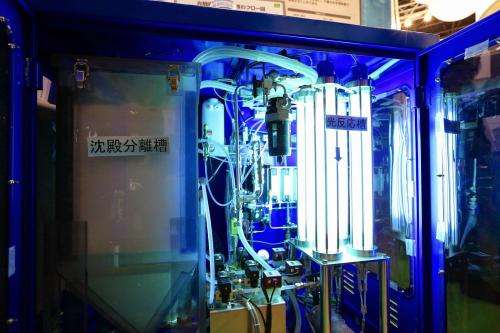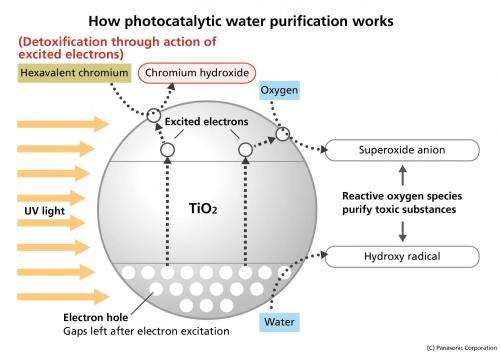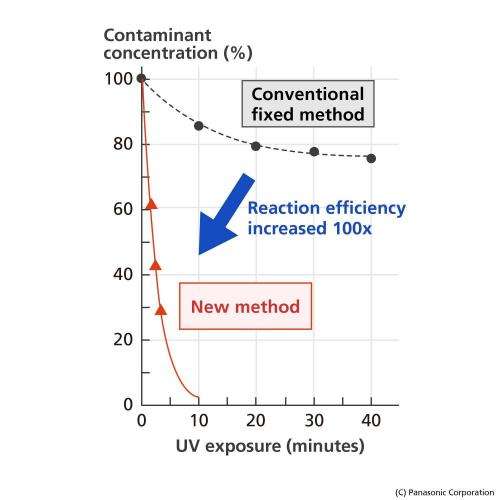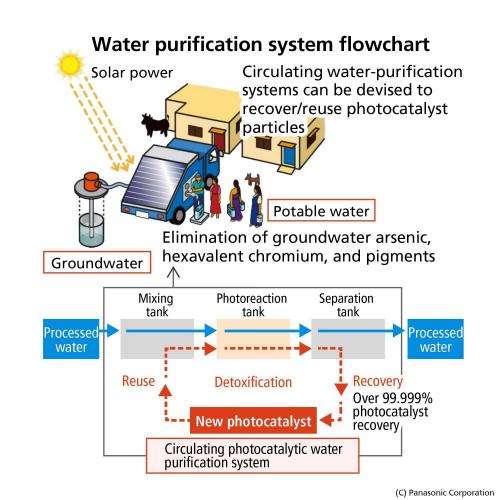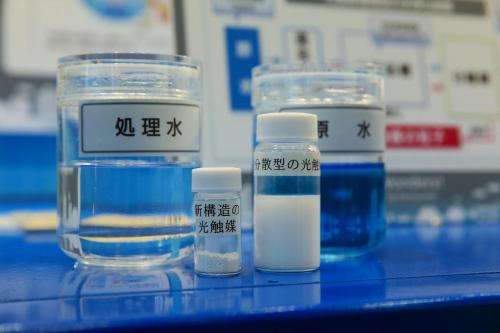Demonstration machine of Photocatalytic Water Purification Technology
While CES show booths are capturing attention with electronic devices, another recent show venue, Eco-Products 2014 in Tokyo, captured attention of people focused on solutions for safe, clean, drinkable water. Panasonic presented India as a case in point. Approximately 70 per cent of the population in India, said Panasonic, uses water not from taps but primarily that from under the ground. Leaching into it are harmful substances such as agrochemical residues, the arsenic of ore veins, and hexavalent chromium from leather tanneries. This creates health problems. Panasonic aims to make this technology available across India and other nations.
Panasonic is talking about its technology which looks to the sun to clean water extracted from the ground. Needy regions of the world not only face a problem of no water but also water nearby that is polluted and undrinkable, and with no easy access to purification systems. Panasonic used the Tokyo event to introduce its water purification technology. They said their purification tech is all about "creating drinkable water with sunlight and photocatalysts."
This technology uses photocatalysts and the UV rays from sunlight to detoxify polluted water at high speeds. Inhabitat said Panasonic's approach involved "binding titanium dioxide (TiO2) – which reacts with uv-light – to zeolite." Past attempts to harness titanium dioxide for this purpose were made, but the fine particle was found to disperse too quickly in water. (TiO2, a kind of photocatalyst, comes in extremely fine particles and is troublesome to collect once dispersed in water, said Panasonic.) Zeolite helps to solve that problem.
Panasonic said, "When these novel photocatalytic particles are agitated, TiO2 is released from the zeolite and dispersed throughout the water. As a result, reaction speed is markedly elevated compared to conventional methods of fixing TiO2 on a surface of substrates, enabling a large volume of water to be processed in a short amount of time. Leaving the water still will cause TiO2 to bind to zeolite again, making it easy to separate and recover the photocatalysts from the water - allowing them to be reused at a later time."
Panasonic talked about another key feature of photocatalysts: they remove any necessity of pharmaceuticals. As such, said the company, they offer a low-cost and environmentally friendly way of treating water.
A number of delivery scenarios may be possible. The company aims to provide this water to small rural communities, for example, using trucks equipped with photocatalytic water purification systems. The company is also looking to link up with local water supply operators to establish water purification facilities. What's more, it is also considering licensing this technology to businesses.
-
How Photocatalytic Water Purification Works
-
Comparison of processing speed
-
Use image in emerging countries and water purification system flowchart
-
(From left) Treated water, new structure photocatalysts, water distributed photocatalysts and raw water
More information: news.panasonic.net/stories/2014/1223_30520.html
© 2015 Tech Xplore
